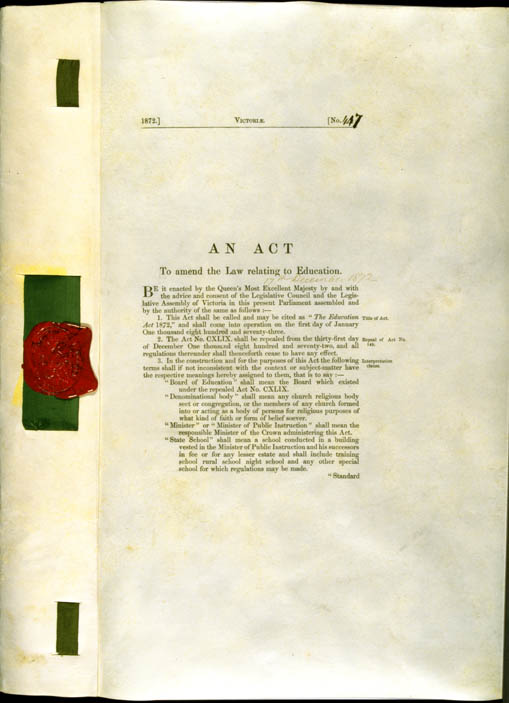Before 1852, there was one compulsory education law on the books that was largely ineffective. This was because parents did not believe that education was necessary for their children. Children were largely used as farm hands or for labor, and parents did not think education was necessary for that. It was also not very high on the governments list to enfor

- (American History Teachers Collaborative)
ce this law. After 1852, Massachusetts began requiring parents to send their kids to school in the nearest city or town. Children were made to attend at least twelve weeks of school, six of those weeks being consecutive. This law ended up being fairly ineffective as well because there was little effort to enforce it. By 1870, the only two other states that enacted compulsory education laws were the District of Columbia and Vermont. It wasn’t until 1918 that all of the other states in the union joined in enacting compulsory education laws. All of these laws were unenforced and inoperative until between 1900 and 1930 when all compulsory schooling laws were transformed from “dead letters” to reasonable and effective statutes; in other words, they took the current compulsory attendance laws, modified and changed them, and then began to really enforce them. States began enforcing compulsory attendance, hiring truancy officers to monitor students as well as enforcing consequences for parents when children didn’t attend. Young students were not allowed to be hired unless they attended a certain amount of school as well. All

of these requirements caused a skyrocket of attendance all throughout the United States. Micheal S. Katz describes some of the biggest changes to compulsory education:
“By 1920 compulsory schooling legislation tended to include longer schooling periods each year, a required school census, the employment of attendance officers, and the elimination of various common exemptions such as equivalent instruction, mental or physical deficiencies, and poverty from the compulsory attendance statutes” (Katz, 22)
Roughly 43 years later, Chief Justice Warren E. Burger voiced his opinion that the state’s interests had been met if a citizen can read, write, and count. This is one of the biggest reasons that compulsory attendance laws are only enforced to the age of 16. Studies done during this time began to show that coerced education was becoming ineffective and nearly half of students enrolled in urban high schools were not attending (Katz, 32).
Today compulsory attendance legislation remains a significant topic for many. There are a lot of people who believe that compulsory attendance laws are unnecessary, but the changing of these laws remains unlikely due to the common belief that schooling is a necessary part of life, and our current society.